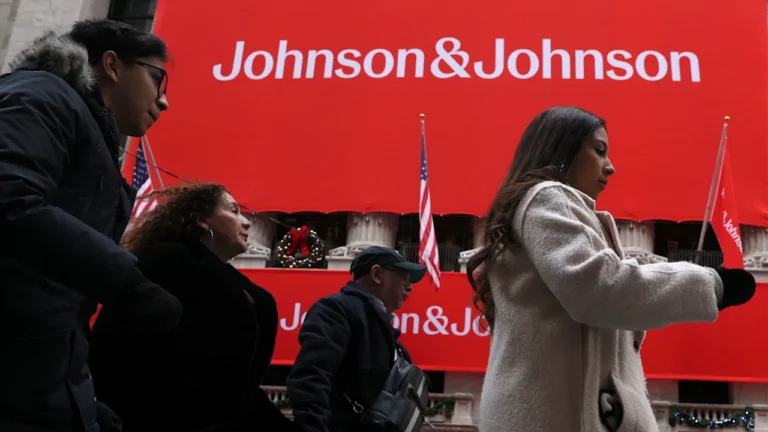
At first glance, preventing school shootings, gun violence, and youth suicide may seem like the responsibility of parents, educators, or law enforcement. But a closer look—backed by research—reveals a much bigger truth: The marketing, media, and tech industries play an outsized role in shaping the narrative of how children view and engage with firearms. That influence can be used for good—or remain a dangerous force accelerating one of our most urgent public health crises.
Twelve years ago, when my son Dylan was killed in the Sandy Hook School shooting, gun violence was covered in the media as tragic but inevitable. Just a grim fact of life in America. But over time, that narrative has changed. The emphasis is now on prevention. We recognize that shootings are not random or inevitable. They are preventable. And that narrative shift is saving lives.
But there is a darker undercurrent to this progress—one that cannot be ignored.
The new target audience: Our kids
In a way unmatched by any other industry, gun manufacturers are marketing their deadly products to children online, often through social media influencers. While children and teens cannot legally purchase firearms, they are exposed to aggressive, often militarized or hyper-sexualized content that equates guns with power, identity, and status.
Our recent report, Untargeting Kids: Protecting Children from Harmful Firearm Marketing, exposes how the firearms industry has refined their strategies over the last decade to intentionally target youth. Tactics include using influencers positioned as peers or role models, pushing content that glorifies violence or revenge, and promoting firearms as symbols of masculinity and control.
And it’s working.
A recent survey conducted by KRC Research for Sandy Hook Promise, revealed the staggering rates at which children are exposed to advertisements for guns. More than half of boys ages 10–17 report seeing sexually charged firearm content at least once a week. One in three boys has clicked on a firearm ad, and nearly one-third of boys follow influencers who promote firearms. Disturbingly, most parents are unaware this is happening on their child’s social media feeds.
Why this matters
Kids are far more susceptible to advertising than adults. Their prefrontal cortex—which governs impulse control and decision making—is not fully developed until they are around 25 years old. They’re more likely to take risks, misinterpret advertising, and mimic influencers. And over the years since youth have been exposed to this type of content, rates of school shootings and youth suicide have skyrocketed. In 2015, there were 41 school shooting incidents, according to the K-12 School Shooting Database. By 2023, that number increased to 340—the highest on record. Each of these incidents was preventable. Each life lost was avoidable.
3 things companies can—and must—do
There is overwhelming support for change. The KRC Research survey shows that 77% of both parents and boys agree: Companies should not advertise firearms to minors. That sentiment is the same in both households with gun owners and those without.
It’s time for businesses—especially those in marketing, media, and tech—to align themselves with this national viewpoint and act accordingly. Here are three ways to companies can take action:
1. Adopt age restrictions for firearm-related content.
Just as with alcohol and tobacco, gun-related content should be age-gated. Platforms should prevent underage users from seeing this content.
2. Build standards for responsible gun messaging.
There is a difference between promoting responsible gun ownership and glamorizing violence or positioning guns as tools to demonstrate power. Decades ago, gun-related advertising focused on safety and instruction. That approach likely saved lives. Let’s return to that standard, especially when the message could reach minors. Brands, influencers, and manufacturers can align on voluntary marketing codes that prioritize education and responsibility over clicks and profit.
3. Close social media loopholes.
Platforms like Instagram and YouTube must crack down on gun marketing. Influencers and personalities who promote firearms without disclosing partnerships should be held accountable. Algorithms that feed children a steady stream of gun-glorifying content should be reprogrammed with public safety in mind.
This is not about politics. It’s about protecting kids.
Many of the most influential firearm promoters online are parents themselves. Most gun-owning families want their children to learn about guns from a place of safety, not sensationalism. We can and must build common ground around that shared value and more safeguarded narrative.
Final thoughts
It’s time for marketing companies, social media platforms, and gun manufacturers to step up. They have a big impact and are uniquely positioned to shape culture—and protect children in the process. By stopping ads that target kids, setting stronger algorithms and age filters for content, and focusing on gun safety and responsibility instead of power and exploitation, these industries can help stop gun violence in our schools, homes, and communities.
Our children should not be the mass casualties of aggressive marketing strategies or passive content moderation. And the business communities who help shape what kids see, hear, and believe need to be part of the solution.
Let’s do what we would do if the children seeing these harmful messages were our children—because they are.
Nicole Hockley is cofounder and co-CEO of Sandy Hook Promise and mother of Dylan, who was killed in the Sandy Hook Elementary School tragedy on December 14, 2012.



